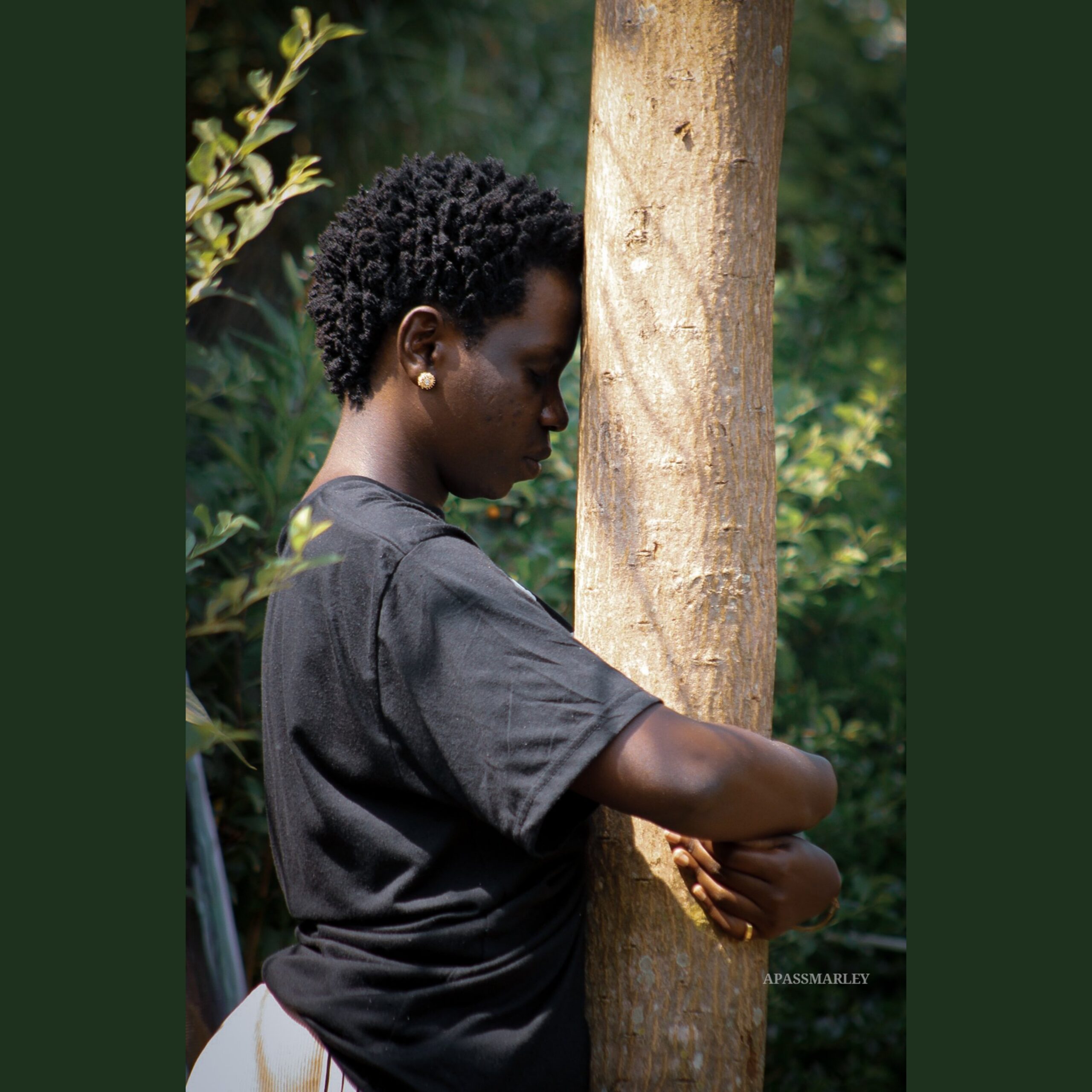In February, Guinness World Records (GWR) declared the remarkable achievement of a Ugandan activist who hugged a tree for 16 hours.
Ariokot Faith, an environmental activist committed to tree planting, registered her protest against continuing deforestation in the world by embracing an Ashok tree for the longest hours at Abigail La Hotel in the city of Soroti, Eastern Uganda.
The Arbor Day Foundation, a nonprofit conservation and education organization, established that trees mitigate climate change by absorbing carbon dioxide from the air as they grow, storing carbon in their biomass and soil, and emitting oxygen, while offering numerous daily benefits to humanity.
Breaking the Guiness World Record
“My motivation came from believing that trees are the greatest soldiers in the fight against climate change. But sadly, they are being cut down or destroyed at record rates. All I wanted basically was to draw the world’s attention to trees and essentially stage a global strike on a global scale,” Faith told Prime Progress.
Faith’s recent global record is the result of several earlier attempts foiled by glitches in her recording equipment.
Twice in 2023, for instance, Faith attempted to break the record, but camera glitches ensured that there wasn’t adequate footage to present to the GWR team. “Additionally, lightning struck, abruptly ending the attempt. We had to try again on January 16th, 2024, That’s when I finally achieved the goal of 16 hours and 6 seconds. The challenge was emotionally and mentally draining, as I was exhausted from the two previous attempts,” she said.
During her final attempt, Faith became “worried about the possibility of things going wrong again, which made the experience long and draining. Also, the rough texture of the tree’s bark caused constant scratching on my hands throughout the day.
“Moreover, there were no opportunities for bathroom breaks; one had to remain on the tree for the entire attempt. These challenges made the task more daunting, but overcoming them added to the sense of accomplishment,” she said.
By remaining glued to a tree for days, the environmentalist hoped to bring awareness to trees, which are largely relegated to the sidelines, and foster conversations about the environment and nature.
According to Faith, this long-drawn hug was a means to share some empathy with nature and acknowledge its significance in our lives. “While I haven’t yet fully felt the impact, I recognize it as a journey, a conversation that may require time to unfold. Nonetheless, I’ve noticed people reaching out to me, expressing interest in trees, and even asking for seedlings. These are individuals who might not have taken such actions if I hadn’t embarked on this record attempt. It’s a testament to the power of connection and the potential ripple effects of our efforts.”
A Green Upbringing
Faith’s love for trees dates back to her teenage years spent assisting her father in planting trees, where she soon became exposed to the varied beauty of the forest.
“Growing up, I began reading more about trees and learned about the significant impact they face worldwide. I couldn’t comprehend why people were hesitant to plant trees.
“With my background in tree planting since the age of 12, I found it natural to engage in spreading awareness and educating others, particularly children, about tree planting. I believe that starting at a young age in the tree planting field made it easier for me to connect with and inspire others,” Faith recalled.
Faith In Trees
According to a 2019 inventory conducted by the National Forestry Authority, Uganda’s forest cover, over the past 30 years, has dwindled from 4.9 million hectares to 2.5 million hectares.
To put this into perspective, in 1990, Uganda’s population was estimated to be around 17.5 million by the World Bank. At present, the national count exceeds 48 million and is projected to reach 74 million by 2040, according to a 2020 World Bank economic update. This alarming surge in population provides insight into potential future scenarios. At least 65% of forest degradation occurs on private land, with landowners opting for land use changes from forestry to agriculture, industry, or settlement and prioritizing these over biodiversity conservation efforts.
As with most of the continent, Uganda is faced with economic hardship, pushing many of its citizens into using firewood and charcoal, which are invariably obtained from the forest.
Drawing on her girlhood passion. Faith formed an initiative in 2019 called Faith in Trees, which essentially focuses on enhancing climate education and climate action among young children.
As part of its vision, Faith in Trees created a special type of pencil called Boom Pencils, which contain seeds that users can plant within their surroundings.
“We provide children with pencils embedded with seeds, teaching them to write with purpose and then plant their pencils at the end of the day”. This simple yet impactful initiative ensures that the trees sacrificed to make the pencils live on indefinitely through planting.”
In 2022, Ariokot won the Youth Innovation Award from Women in Climate change with her invention of the Boom pencil
Beyond instilling a sense of environmental stewardship in the children, the pencil guarantees a longer life after its initial use.
“One hundred and fifty thousand Boom pencils, potentially leading to the growth of one hundred and fifty thousand trees, has been shared across several schools. Likewise, Faith in Trees has physically planted ten thousand trees in Uganda,” Faith said.
Reflecting on her decisions, she reveals her intentions of constantly reminding and enabling humans to get into tree planting as her life mission. Her record-breaking feat and Faith in Foundation are measures she has taken to plant trees and influence others to do likewise in their immediate communities.
“Interestingly, the best time to plant trees was twenty years ago, and the second best time is now. So let’s just start.”
At the time of the GWR attempt, Faith was on her monthly menstrual period, which brought a strong feeling of unease to her. “Interestingly, during the attempt, I was on my period. We had set the date beforehand, and it happened to fall during that week. So, I was experiencing the discomfort of cramps without any bathroom breaks, forcing me to wear adult diapers.”
Remembering the anxiety that came over her, Faith said with delight, “I doubt a man would have faced such a challenge.”






